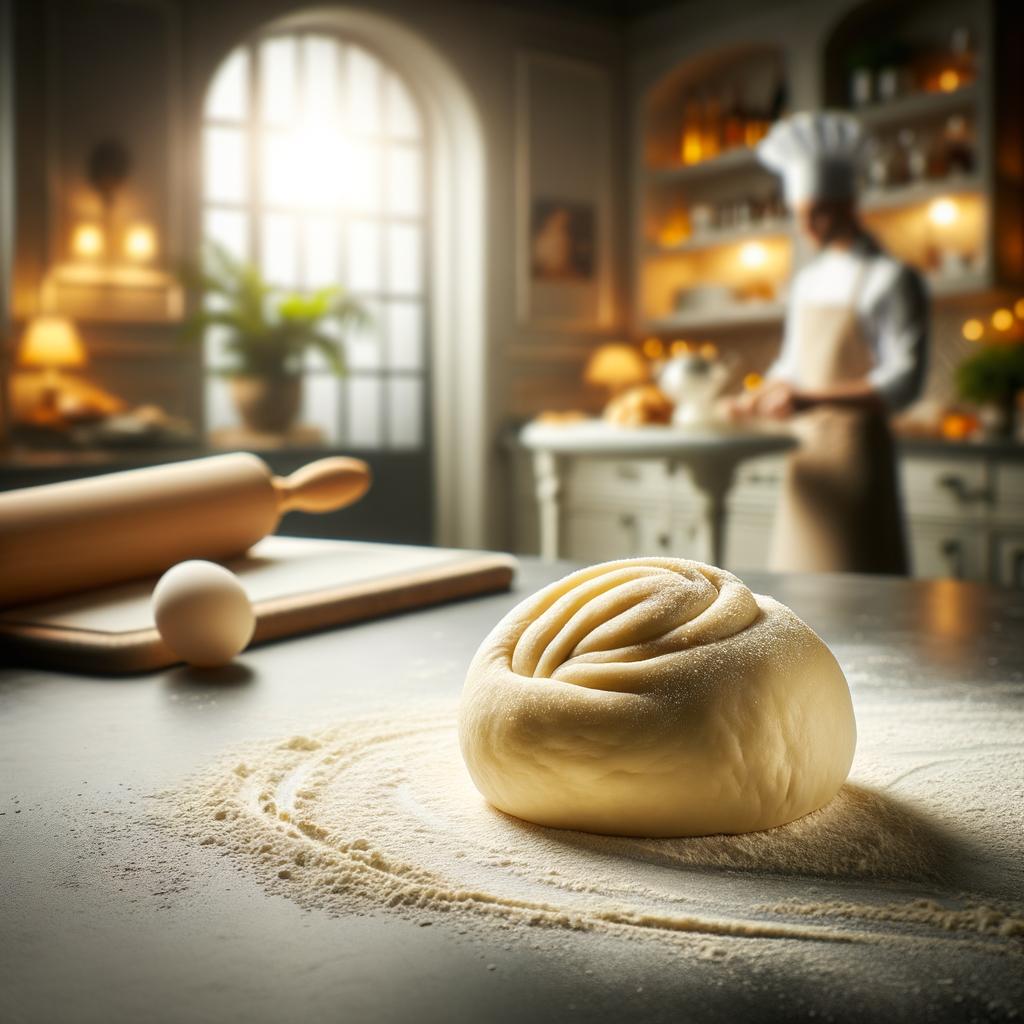Pastry Dough

Description
Pastry dough, a beautiful blend of simplicity and complexity, is a cornerstone of both sweet and savory culinary creations. It is a humble mixture of flour, fat, and water, but the magic lies in the technique of making it. The dough is usually pale white or beige, with a soft yet firm texture that is pliable under the touch of skilled hands. When baked, it transforms into a golden, flaky masterpiece with a buttery aroma that teases the senses. The flavor profile is subtly savory, a blank canvas that pairs well with any filling, whether sweet or savory. Pastry dough is unique in its versatility and the myriad of textures it can achieve, from the tender crumb of shortcrust to the delicate layers of puff pastry.
Primary Uses
Pastry dough is the backbone of countless dishes across various cuisines. In France, it's used to create the flaky layers of croissants and pain au chocolat. In Italy, it forms the base of rustic tarts known as crostatas. American apple pie wouldn't be the same without a buttery pastry shell, and British Cornish pasties rely on sturdy pastry for their handheld convenience. Beyond the culinary world, pastry dough has cultural significance, often being associated with holidays and celebrations, such as the galette des rois for Epiphany in France or the mince pies for Christmas in England.
History
The history of pastry dough is as rich and layered as the dough itself. It can be traced back to ancient times, with the Egyptians, Greeks, and Romans all having their versions of early pastry. The Romans, for instance, used a simple pastry of flour and water to cover meats and game before roasting, to retain the juices. However, it was in medieval Europe that pastry truly began to flourish, with the advent of lard and butter making techniques. The art of puff pastry was perfected in France in the 17th century and has been a staple of French patisserie ever since. Over time, the use of pastry dough has evolved from a practical cooking tool to an art form, with chefs and home cooks alike finding endless ways to incorporate it into their dishes.
Nutritional Information
While pastry dough is not typically associated with health food, it does offer some nutritional value. The flour provides carbohydrates for energy, while the fat contributes to satiety. Depending on the type of fat used, it can also provide a source of healthy fats. For instance, using butter can provide small amounts of Vitamin A and D. However, like all good things, pastry dough is best enjoyed in moderation due to its high calorie content. Compared to whole grain doughs, pastry dough has less fiber and can be higher in fat, but it's the indulgence that makes it a special treat. After all, there's nothing quite like the flaky, buttery delight of a well-made pastry.

